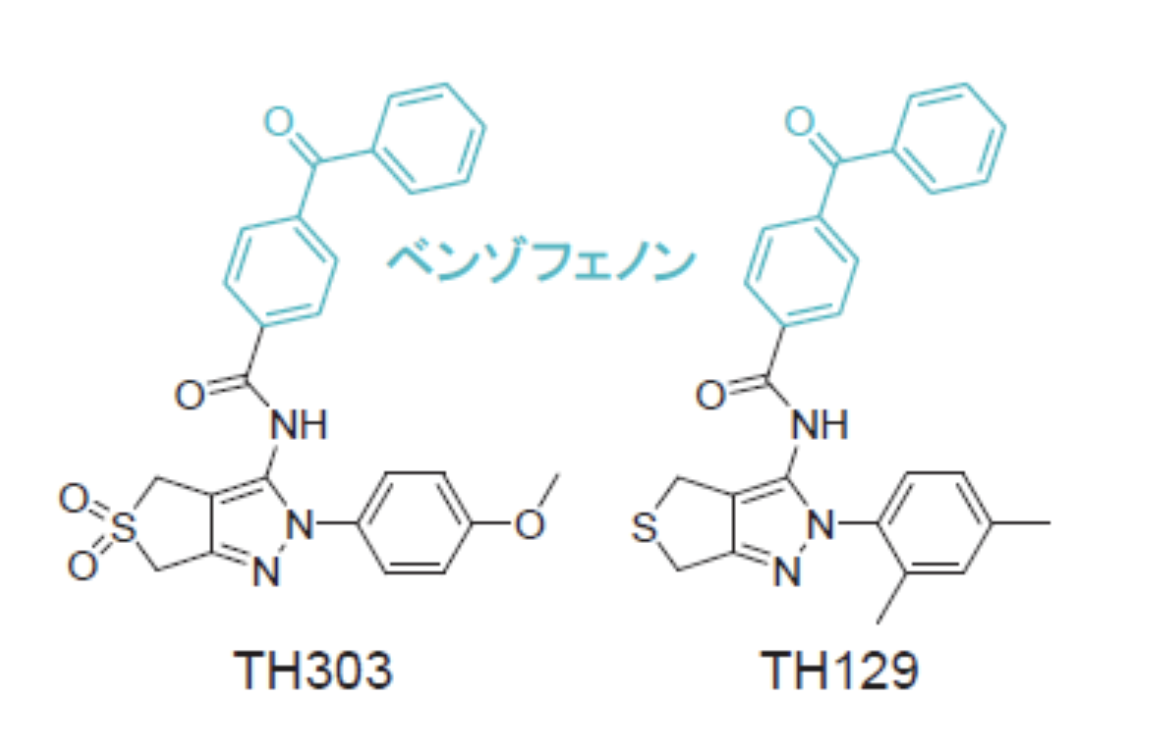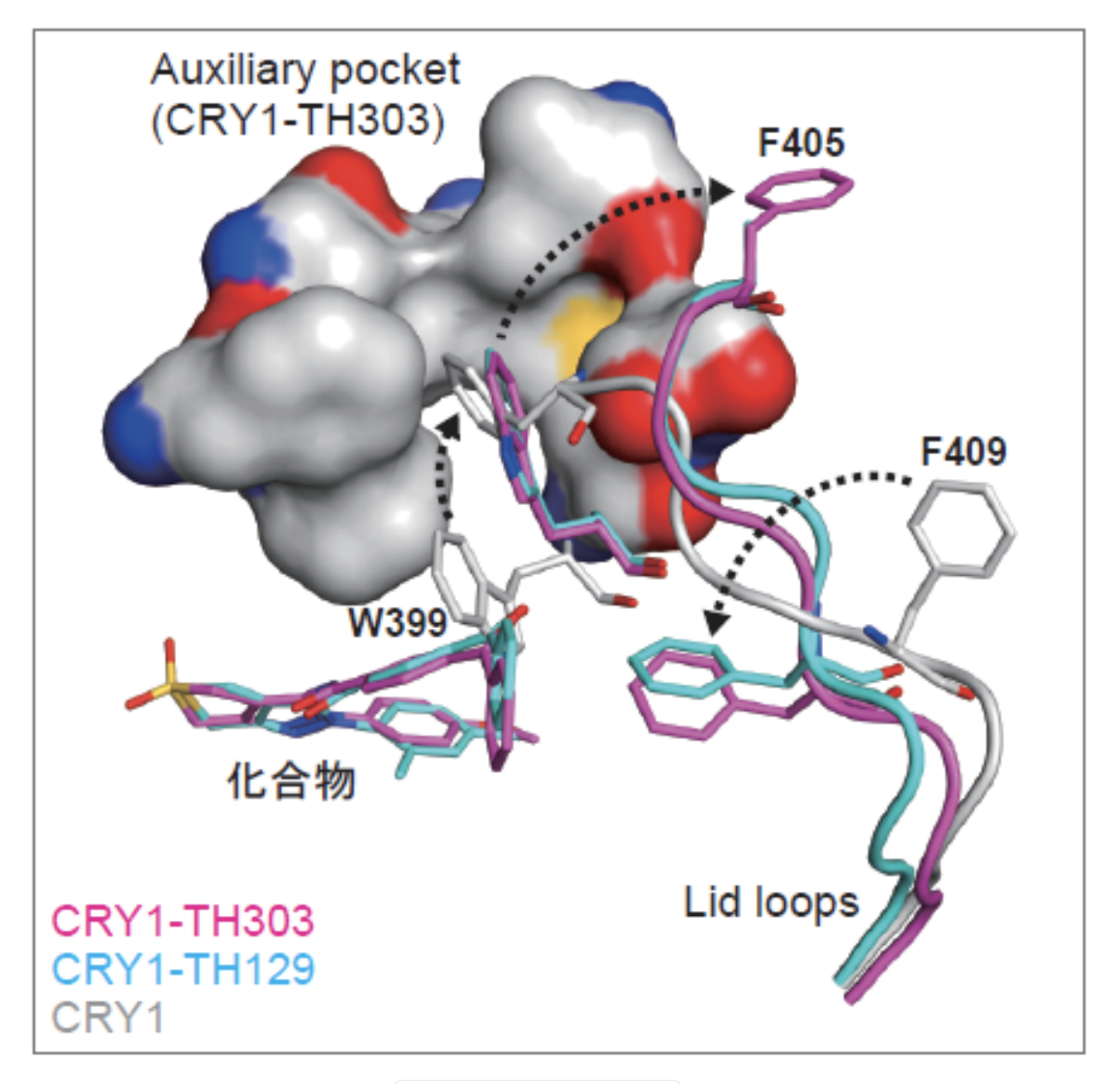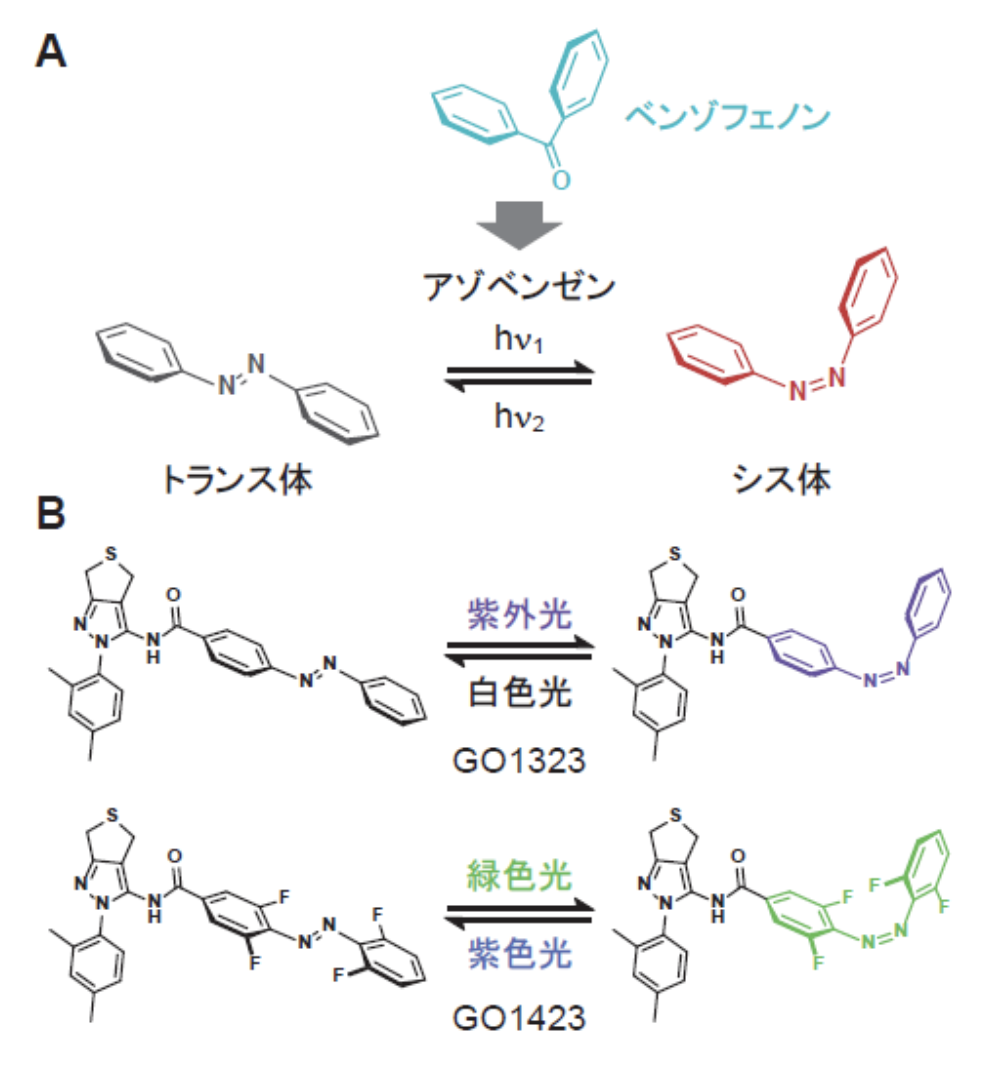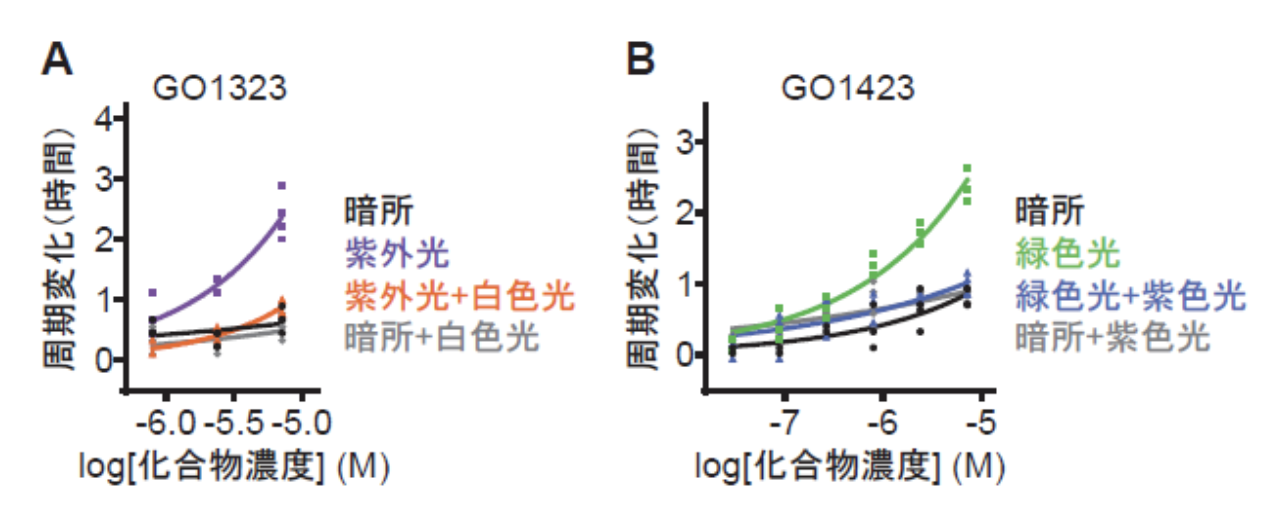Research Highlights
Photopharmacological Manipulation of Mammalian CRY1 for Regulation of the Circadian Clock
The circadian clock is responsible for managing an organism's daily rhythms, including sleeping and waking, and disturbance of its function contributes to conditions such as sleep disorders, metabolic syndrome and cancer. If we can manipulate the circadian clock at will, we will not only be able to understand how organisms measure the length of a day, it could also be the source of treatments for these related diseases. The research groups of Designated Associate Professor Tsuyoshi Hirota and Postdoctoral Fellow Simon Miller, and Professor Kenichiro Itami and graduate student Tsuyoshi Oshima (Research Fellowship for Young Scientists, JSPS) of the Nagoya University Institute of Tranformative Bio-Molecules (WPI-ITbM), in collaboration with the group of Professor Ben Feringa and Postdoctoral Fellow Dušan Kolarski of Groningen University in the Netherlands, have found a novel small molecule compound which extends the period of the circadian clock, and discovered that it acts selectively on the clock protein CRY1. Additionally, they revealed by X-ray crystallography that the compound causes changes in the structure of CRY1. Based on these discoveries they succeeded in being the first in the world to be able to reversibly manipulate the function of CRY1 and the length of the circadian rhythm using light, by exchanging part of the compound for a light-activated switch.
This study is published in the Journal of the American Chemical Society on January 19, 2021.
About the research
Waking in the morning, sleeping at night - the majority of our biological activities repeat within a daily cycle. The internal process which governs this rhythm is known as the circadian clock. While it is understood that the circadian clock is controlled by the combined work of clock genes and clock proteins 1), the process by which it is possible to control and stabilize the rhythm over the long period of a day has been shrouded in mystery. In order to tackle this question, the researchers established a chemical biology 2) process for large-scale analysis of the effect of compounds on the circadian rhythm in cultured human cells, elucidating the significant molecular mechanisms which determine the daily period. Through detailed analysis of compounds who functional mechanisms were previously unclear, it is anticipated that, alongside deepening our understanding of the control mechanisms of the circadian clock, this process will find practical application in its functional control.
Additionally, as the control mechanisms of the circadian clock exist in every cell in the body, it is thought that a technique for local manipulation of the circadian clock will be required. Although photopharmacology has recently been noted as a method for the control of the action of compounds using photoresponsive molecules, azobenzene 3), which is commonly used as a light activated switch, has low cis body stability, and was considered to be difficult to use in longer biological phenomena such as the circadian rhythm.
First, the team analyzed the mechanism of TH303 and its analogue TH129 (Figure 1), which were identified as circadian rhythm lengthening compounds through large-scale analysis. They showed that while the compounds had a stabilizing and activating effect on CRY1, but no effect on its analogue CRY2. As CRY1 and CRY2 are very similar, the development of a selective compound was considered very difficult. Thus, the discovery of the selective action of TH303 and TH129 was a real surprise.

Next, in order to find out how these compounds work, they worked on elucidating their interactions with CRY1 at a molecular level using X-ray crystallography 4) . As a result, they found that a part of the compounds known as a benzophenone interacts with the 409th phenylalanine (F409) of CRY1, changing the structure of a region known as the lid loop (Figure 2). As the compounds lose their efficacy through thee displacement of the benzophenone and the mutation of F409, this particular interaction was considered significant.

Here, the researchers noticed that the three dimensional structure of the benzophenone is similar to the cis isomer of azobenzene, a light activated switch. When they analyzed the optical response of GO1323 (Figure 3), a compound of TH129 in which benzophenone is displaced by azobenzene, they found that the structure changed with a high degree of efficiency to the cis isomer under ultraviolet light and to the trans isomer under white light. Even more surprising was the discovery that the cis isomer of GO1323 has a half-life of over one day and is exceptionally stable. According to computer simulations, the cis isomer of GO1323 interacts identically to TH129 with F409 of CRY1, while the trans isomer has no interaction with it. Thus, having experimentally analyzed its interaction with CRY1, they were able to determine that, as predicted, the interaction of GO1323 is dependent on light.

It was found that, when exposed to ultraviolet light, the circadian rhythm period of cultured human cells which had been treated with GO1323 was extended compared with those which were kept in the dark (Figure 4A). Furthermore, when those cells were exposed to white light, the period extending effect was no longer present. That is to say, it was possible to reverse the effect of light on the circadian rhythm. However, as ultraviolet light is damaging to cells, it is not suitable for this application. Thus, they synthesized GO1423 (Figure 3B), containing tetraorthofluoroazobenzine. This compound changes to its cis isomer under green light, and to its trans isomer under ultraviolet light, while maintaining the other desirable characteristics of GO1323. When cells treated with GO1423 were exposed to green light, their circadian rhythm period was extended compared with those which had been kept in the dark, and when exposed to ultraviolet light, the period extending effect disappeared (Figure 4B). Thus, the researchers succeeded in producing a reversible method for extending the circadian rhythm period using visible light.

Although CRY1 and CRY2 are exceptionally similar proteins whose functions were thought to be shared, in recent years their differences have come to be recognized. In this study, using cutting edge chemical biology and photopharmacology, the selective, light-controlled, reversible manipulation of the circadian rhythm using CRY1 was realized.
The cis isomer of GO1423, the compound created in this study, proved to be a stable and practical tool for the functional analysis of CRY1. As CRY1 is implicated in various diseases including sleep disorders, metabolic syndrome, future analysis of derivatives of GO1423 is expected to assist in the treatment of these diseases.
Vocabulary
1) Clock genes and clock proteins
Genes and proteins necessary for the functioning of the circadian clock. In mammals, there are 6 currently known: PER1, PER2, CRY1, CRY2, CLOCK and BMAL1. The functional control of these genes and proteins is thought to fulfil an important role in the regulation of the circadian clock.
2) Chemical biology
Using the power of chemistry to confront the mysteries of biology. In the case of this study, using new compounds to affect the circadian rhythm and elucidate its function.
3) Azobenzene
Compound with the structure shown in Figure 3A. Changes to its cis isomer under UV light, and to its trans isomer under white light. Its absorption wavelength changes according to its substituents. This study used tetraorthofluoroazobenzene to make it controllable by visible light.
4) X-ray crystallography
A method for 3D imaging of molecular structures by irradiating crystals with X-rays. This study used SPring-8 and the 8GeV synchrotron radiation facility at the High Energy Accelerator Research Organization (KEK).
Journal information
The article "Photopharmacological manipulation of mammalian CRY1 for regulation of the circadian clock" by Dušan Kolarski, Simon Miller, Tsuyoshi Oshima, Yoshiko Nagai, Yugo Aoki, Piermichele Kobauri, Ashutosh Srivastava, Akiko Sugiyama, Kazuma Amaike, Ayato Sato, Florence Tama, Wiktor Szymanski, Ben L. Feringa, Kenichiro Itami, and Tsuyoshi Hirota is published in Journal of the American Chemical Society.
DOI: 10.1021/jacs.0c12280
2021-01-27

